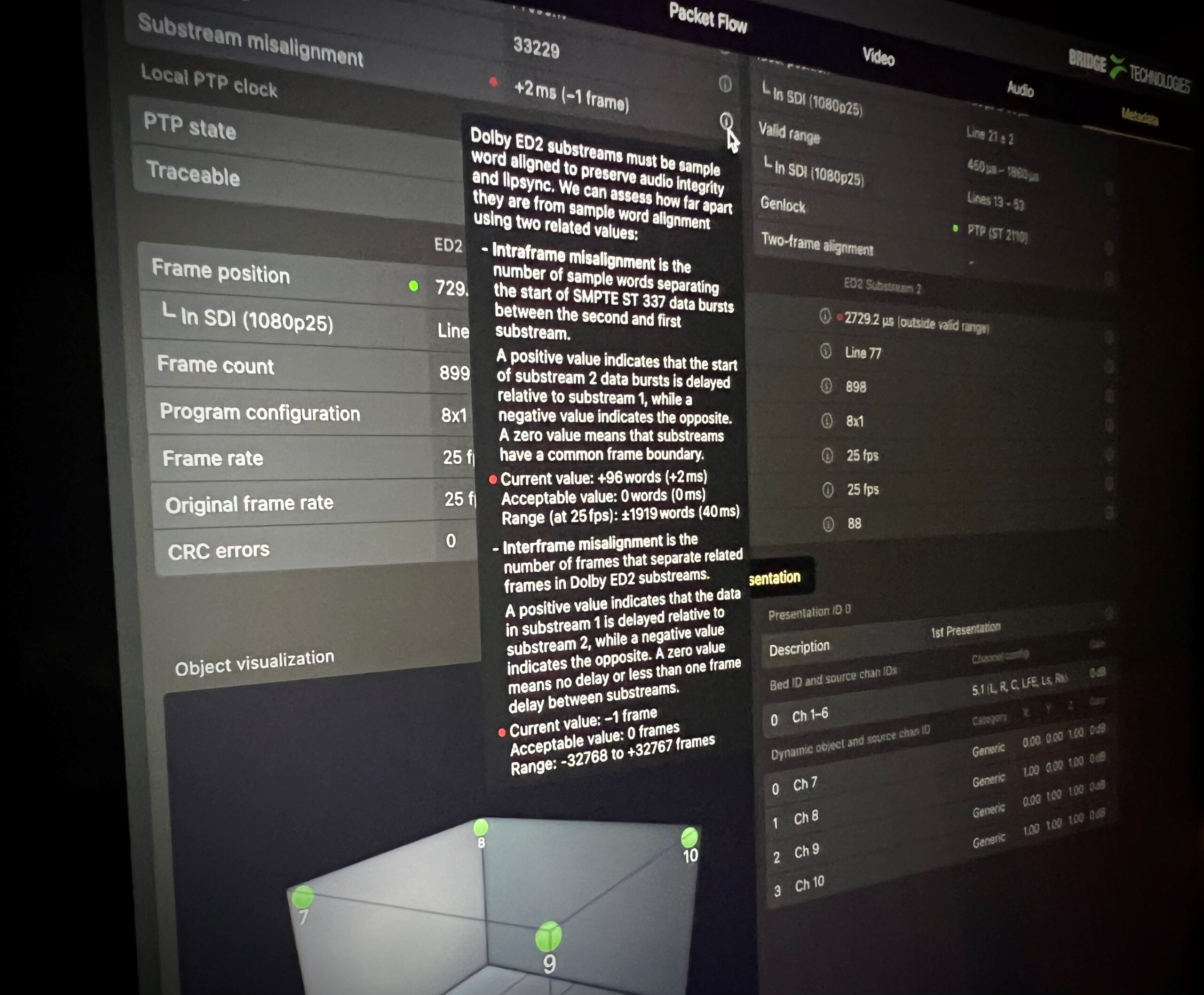Bridge Technologies has recently developed a unique new addition to its production-orientated VB440; a comprehensive series of Dynamic Explanatory Hovercards which give in-depth but intuitively understandable information about each metric to its user.
The aim of the newly introduced hovercards is to ensure that even non-engineers are able to engage productively with the information generated by the probe – using it to aid decision making both in-the-moment and on a more long-term, strategic basis.
The launch of the hovercards coincides with Bridge’s introduction of more in-depth, dynamically changing, readable values to the status of various audio components.
These change according to the audio component being examined (for instance, Dolby audio metadata, Dolby Atmos metadata), and are available in the metadata tab.
The new Dynamic Explanatory Hovercards sit aside these new numerical readouts, and when accessed give the user the full audio component name (rather than its acronym), its purpose and what it signifies about the component, along with real-time, dynamically adjusting formulas which show the method of analysis being used, and how the actual performance values in-the-moment plug into the equation.
Combined with the presence of visual alarms when any of the displayed values exceed parameters, the addition of Dynamic Explanatory Hovercards means even a non-technician can monitor the outputs of the VB440, keeping an eye on the health and performance of the production network and understanding not just when an error occurs, but where it is, what it means, and why it matters.
The move to make complex network data accessible to non-engineers is just another stage of development in a philosophy that has been embodied within the VB440 since its inception.
One of the main features of the probe is that it takes technical and complex network information on data flow and turns it into usable, visual tools for both audio and video engineers.
“This manifests in a range of advanced audio metering tools – along with single channel audio isolation and 7.1 stereo downmix playback, and also takes the form of full waveform and vector colorimetry (including HDR preview) across a full range of resolutions and compressed and uncompressed formats (including JPEG-XS).
All tools – whether geared towards network engineers or creatives – can be accessed from anywhere in the world using any HTML-5 enabled browser.
Chairman of Bridge Technologies Simen Frostad said: “We are incredibly proud of the introduction of Dynamic Explanatory Hovercards, in great part because of how neatly they fit with our philosophy of ‘Making the Complex Simple’.
“I’m a great believer in learning through doing, and I genuinely believe that an individual with almost no knowledge of IP broadcast could – simply by engaging with the VB440 and the hovercards – very quickly get up to speed on the essential functions of a production network.
“The dynamic element of them – plugging real-time data into the equations as it develops – is a particularly important part in understanding the relational elements of network performance”.
Bridge will be demoing the various ways in which the VB440 has been developed to accommodate the needs and job roles of a diverse range of people at IBC2023 (Booth 1.A71).






